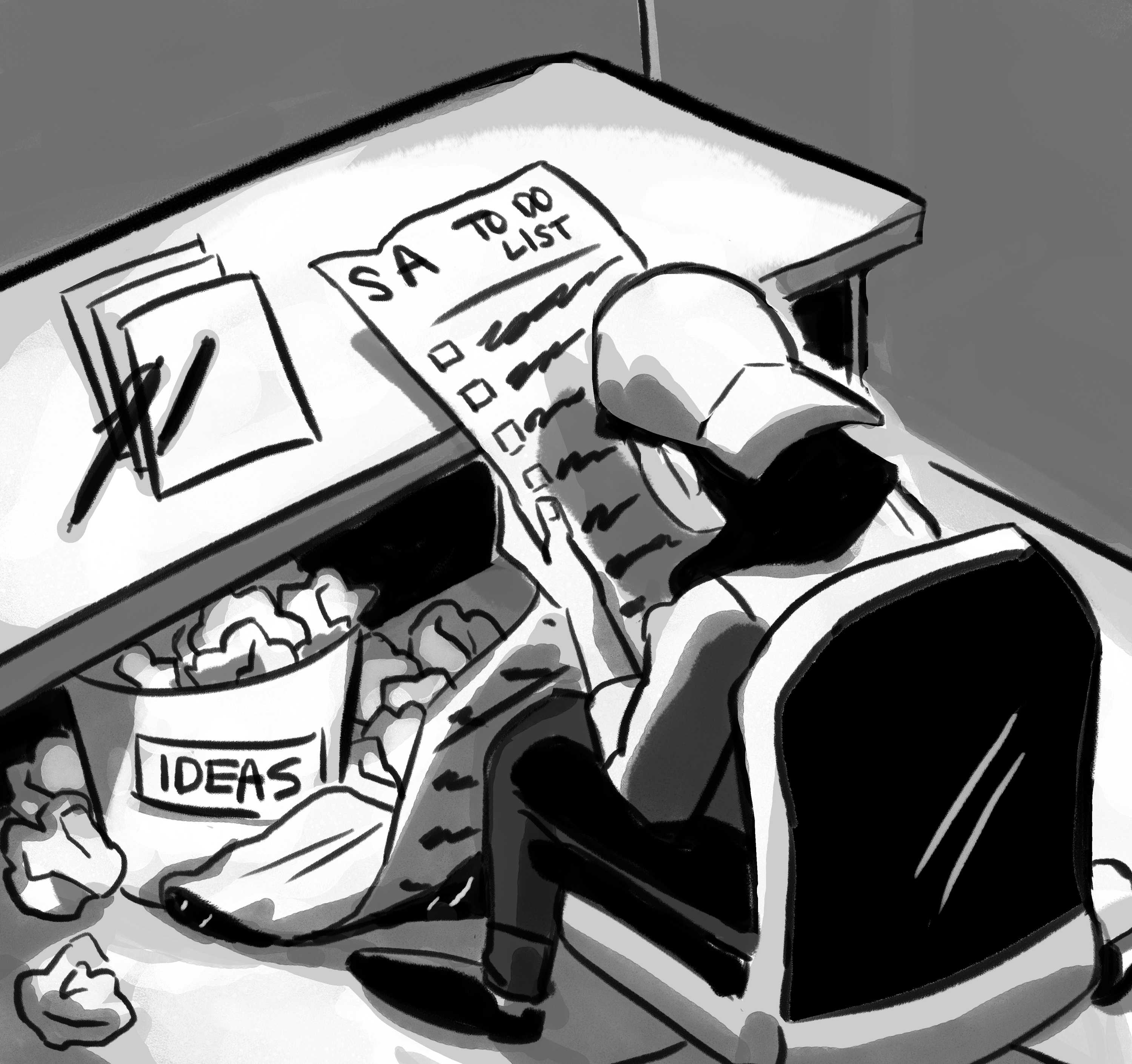Student Association President Ashley Le released an agenda of issues earlier this month that she plans to tackle during her time as the top leader of GW’s student government. Le has zeroed in on seven areas, including affordability, food insecurity and diversity and inclusion.
While Le highlighted issues that do affect students when choosing her priorities, her main solution is crafting task forces and committees, which only increases bureaucracy and doesn’t actually solve the issues at hand. Considering that it is halfway through October, accomplishing goals in all seven of her targeted areas is unrealistic – especially with the solutions she has proposed.
Based on the time she has left and the scope of the problems, most of Le’s solutions are vague and fail to provide tangible solutions. For five of her seven goals, Le proposes a task force, committee or conversation, which only provides a marginal step forward. Instead of promoting conversation, Le needs to identify specific ways to improve the lives of students if she wants to leave a lasting impression during her tenure.

Cartoon by Jeanne Franchesca Dela Cruz
Many of Le’s agenda points – like creating a first-year experience class and establishing a food cooperative – are long-term goals that require infrastructure that doesn’t exist and therefore are unlikely to be accomplished.
Providing urgent care on the Vern is a positive goal in theory, but it isn’t realistically going to be accomplished in one year because it requires an extensive hiring process and a space to build a clinic.
Le should rethink the feasibility of these goals and shift to issues that can be accomplished in her time or at least draw up tangible tasks, like her goal of reducing the cost of laundry, that can chip away at her larger goals so future presidents can continue toward solving the overarching issue.
While Le appears to be in touch with students’ concerns by focusing on issues like graduate student life and lack of community for students on the Vern, some are not in line with student desires.
A large problem with one of her solutions, the first-year experience class, is that it is unlikely that students would want to take another required course on top of their academic schedules. During Le’s campaign, The Hatchet’s editorial board pushed against the idea as it would require professors and administrators, making it difficult to accomplish in her tenure. Pursuing this unrealistic and possibly unpopular goal instead of focusing on more tangible ideas that students want is not a good use of her time.
While some goals seem unattainable, some of Le’s goals like expanding a student emergency fund and reducing laundry costs should be easy boxes to check off. A fund for students that have unexpected financial need during the academic year already exists, so expanding it to include graduate students could likely be completed in a single meeting with administrators. Doing so would likely benefit only a few of the thousands of graduate students at GW, but it’s heartening that Le is trying to support this group that has said they feel left behind in the SA despite making up the majority of students. Goals like this should be Le’s focus and since she has already had months in office, we wonder why this hasn’t been addressed already.
It is also striking that some priorities that provided the basis of her platform are absent from her updated plan. Le’s agenda doesn’t include her idea to pair international students with domestic students to better develop relationships between both groups and create a more inclusive campus. Not only would that idea be more beneficial for campus diversity than the task force she currently proposes, but it is also a better way to transition new students than a first-year experience class. Ideas she expressed during the campaign may have been the reason students voted for her, so she should stay consistent by including those proposals or explain why she is no longer prioritizing these goals.
While it’s important that a president shoots high and aims to address large issues on campus, all of her goals can’t be lofty. Most students would prefer action on goals that will affect them during their time at GW, so her agenda should include a mix of short-term and long-term goals.
With several priorities, each encompassing multiple steps to reach the goals, Le needs to be public about exactly what she wants to do and when she wants to do it. Many of her goals lack a timeline, so it might not be clear to students whether she will accomplish them. Through a public timeline, Le can be held accountable by the students that she represents for what she has and hasn’t done.
Le has numerous goals and it’s vital that she doesn’t get lost in the list she’s created. She must refine her goals and be clear about her stance rather than hide behind committees and task forces. Le should focus on the realistic short-term goals within her plan that can lead to solving bigger problems down the line if she wants to be effective during her tenure. She must be transparent with the student body when discussing how she will approach these goals and must do better in taking actionable steps to solve the laundry list of problems she’s given herself.
The editorial board is composed of Hatchet staff members and operates separately from the newsroom. This week’s piece was written by opinions editor Renee Pineda and contributing opinions editor Kiran Hoeffner-Shah based on conversations with The Hatchet’s editorial board, which is composed of managing editor Matt Cullen, design editor Zach Slotkin, managing director Elise Zaidi, sports editor Barbara Alberts and culture editor Margot Dynes.

